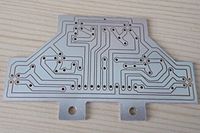
Photo from wikipedia
To improve the driving efficiency and energy-saving characteristics for large-scale mixed traffic flows under different market penetration rates (MPRs) of intelligent and connected vehicles (ICVs) at unsignalized intersections, considering the… Click to show full abstract
To improve the driving efficiency and energy-saving characteristics for large-scale mixed traffic flows under different market penetration rates (MPRs) of intelligent and connected vehicles (ICVs) at unsignalized intersections, considering the cooperative eco-driving performance between ICVs and human-driven vehicles (HDVs) with time-varying speed characteristics, the hierarchical and distributed cooperative eco-driving architecture is first established in this paper, consisting of a cloud decision layer and a vehicle control layer. For the cloud decision layer, the multivehicle model-free adaptive predictive cooperative driving (MFAPCD) method is designed by using only the driving data of the HDVs and ICVs formation based on compact form dynamic linearization (CFDL) technique, thereby improving traffic efficiency. Furthermore, the CFDL integral terminal sliding mode predictive control (CFDL-ITSMPC) scheme is utilized to predict the time-varying driving speed of HDVs, and then, the CFDL predictive control (CFDL-PC) scheme is utilized to predict the expected control variables of ICVs formation. For the vehicle control layer, based on the anticipated driving speed obtained from the cloud decision layer, the nonlinear distributed model predictive control (NDMPC) method is utilized for distributed optimal control of each vehicle formation, to achieve optimization in terms of energy saving. Simulation results show that, compared with the signal time assignment strategy, the method can increase the average velocity by about 15.22% and decrease the average fuel consumption by about 36.43% under different MPRs and traffic volumes.
Journal Title: Journal of Advanced Transportation
Year Published: 2023
Link to full text (if available)
Share on Social Media: Sign Up to like & get
recommendations!